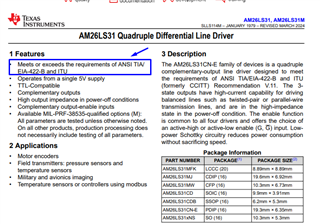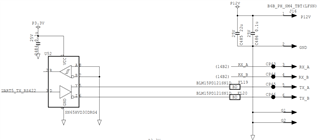Other Parts Discussed in Thread: SN751178
Tool/software:
HI,Team
There is a TIA/EIA-485-A difference between AM26LS31 and SN751178 in the first feature. What is the specific difference between TIA/EIA-422-B and TIA/EIA-485-A?
We currently have a demand to use SN751178. When we use it, we only use the output end and not the input end. So we want to use AM26LS31 instead of SN751178 to reduce costs Can AM26LS31 replace SN751178?
Thank you.




